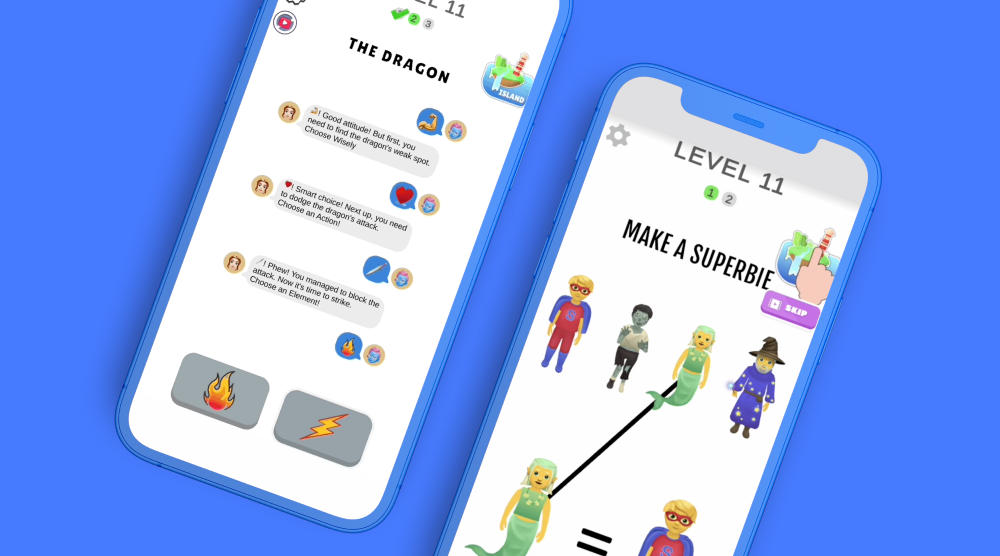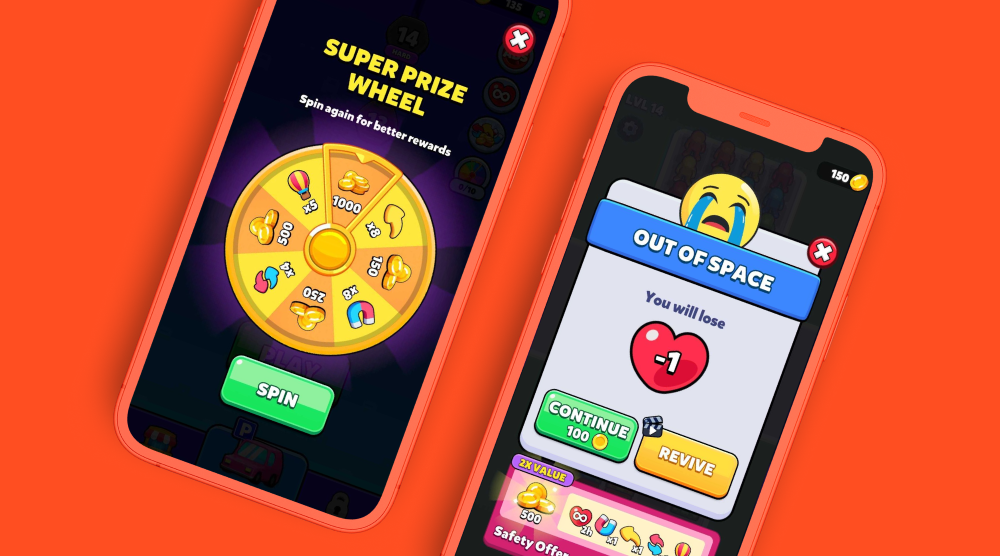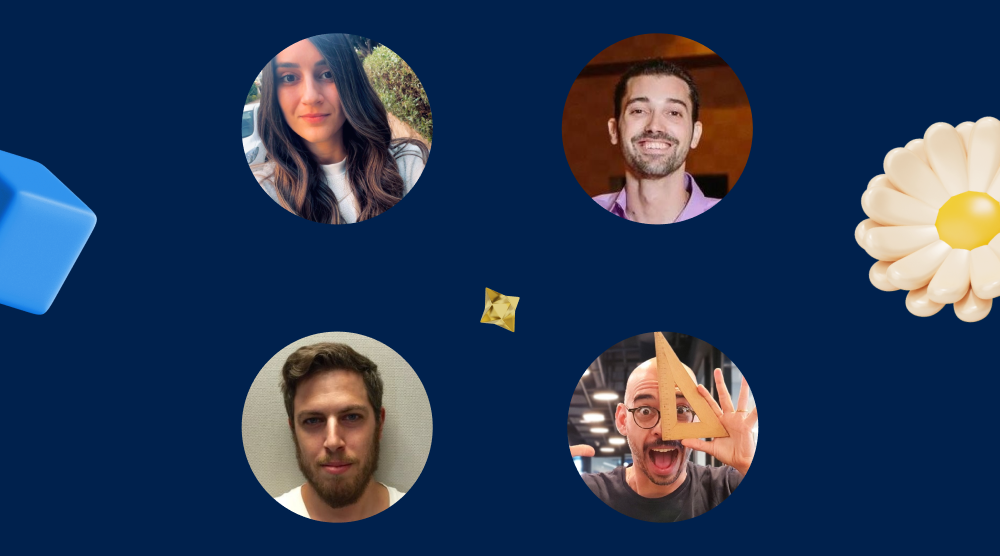Getting through the prototyping stage quickly and efficiently is the key to launching your game before a similar idea gets published first - or going back to the drawing board before wasting time and resources. There are best practices you can follow to set your prototype up for success, and there are also excellent tools available to development teams of all experience levels and sizes. When combined, these tips and tools can help you prototype more quickly, efficiently, and effectively so you can focus your efforts only on high-potential concepts.
Here, Anna Fomina, Game Designer at Supersonic, shares her top six AI design tools to improve your speed during prototyping - and beyond.
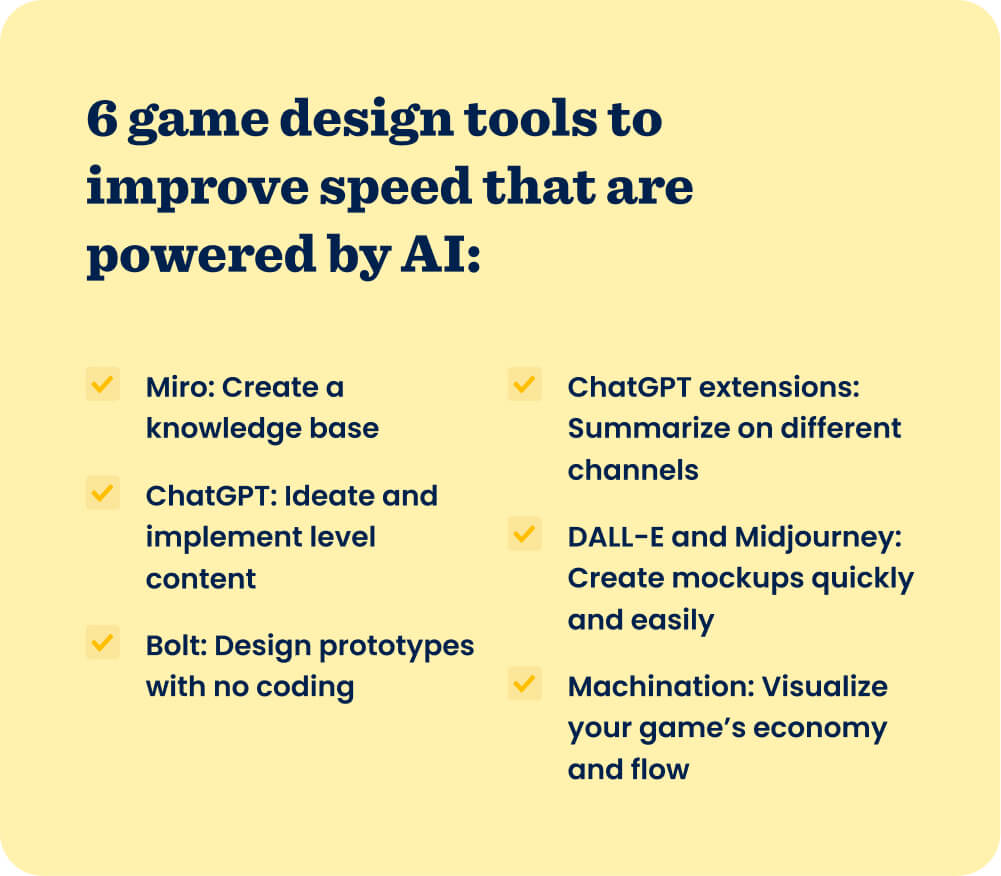
1. Generate a knowledge base of ideas and references with Miro
You can create a knowledge base to introduce hyper-casual concepts, show the main ideas of your game, and brainstorm new elements. It’s a tool for answering everything from, “What’s the feeling of the game?” to, “What camera angle should I use?” For example, when building a runner game, you can add references about the genre and common themes and elements, like characters, camera angles, and level design - your knowledge base becomes a library of examples.
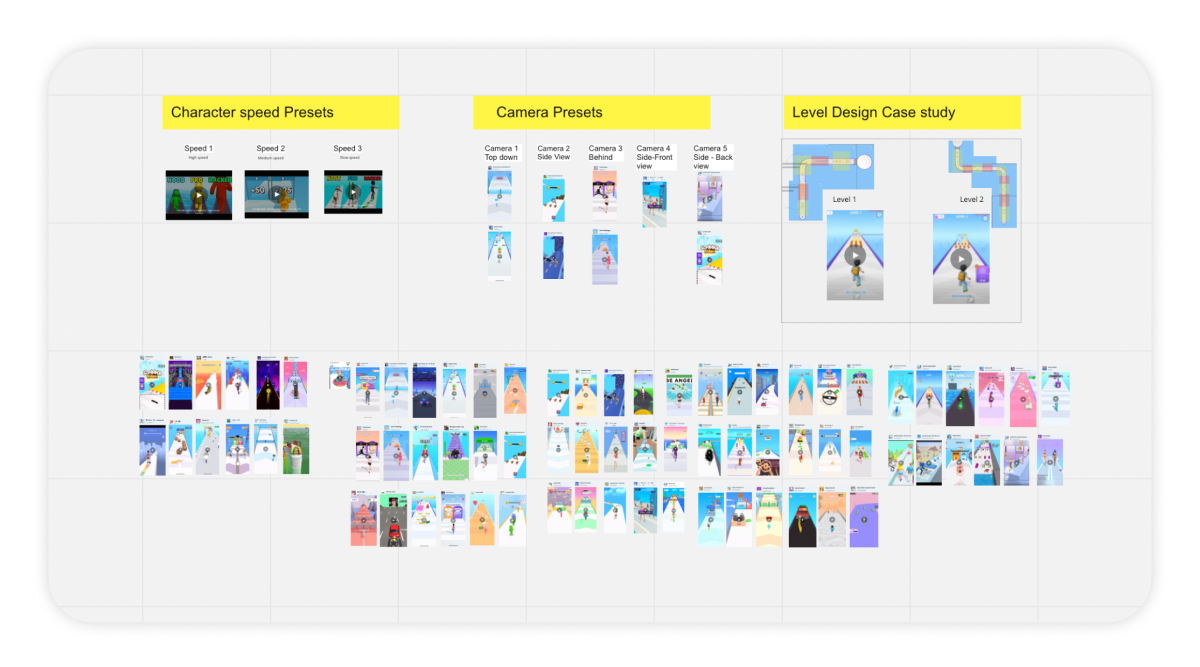
Miro is a visual collaboration tool that our team uses to build a knowledge base quickly and easily. We can then easily share the board and continue building upon it throughout game development - it’s like a dynamic collection of best practices and references. Having one place to collect everyone’s ideas and suggestions in a visual way improves efficiency and accuracy, all while ensuring all those involved in building the game are on the same page.
2. Ideate and implement levels using ChatGPT
AI-based programs represent a new frontier for game development. That’s because you can use tools like ChatGPT and Midjourney for everything from ideation to coding. In particular, we use ChatGPT for coming up with new level content and helping us implement it.
Getting ideas for level content
As we were working on the game Fantasy Tree, for example, we ran into some big challenges, like CPI starting to increase and our artist becoming unavailable. We still needed to produce game content, though - and do it both quickly and affordably.
So we turned to ChatGPT. First, we wrote down the rules of the game’s mechanic as a technical game design document (GDD).
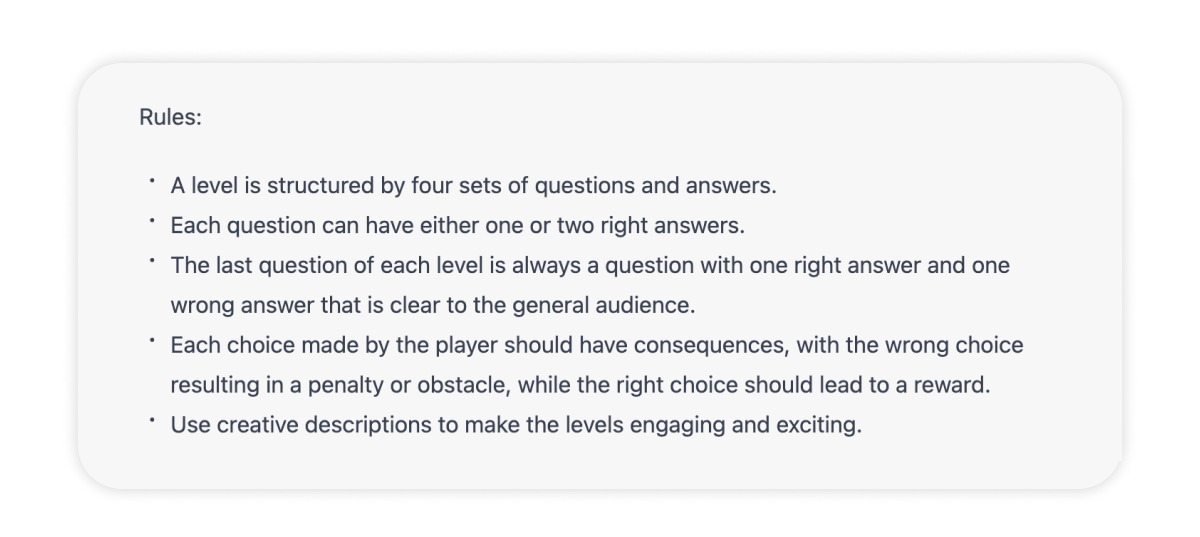
Then we input this into ChatGPT with the request to make levels. The result was a basic outline for different level content that followed the mechanic and rules set out in the GDD.
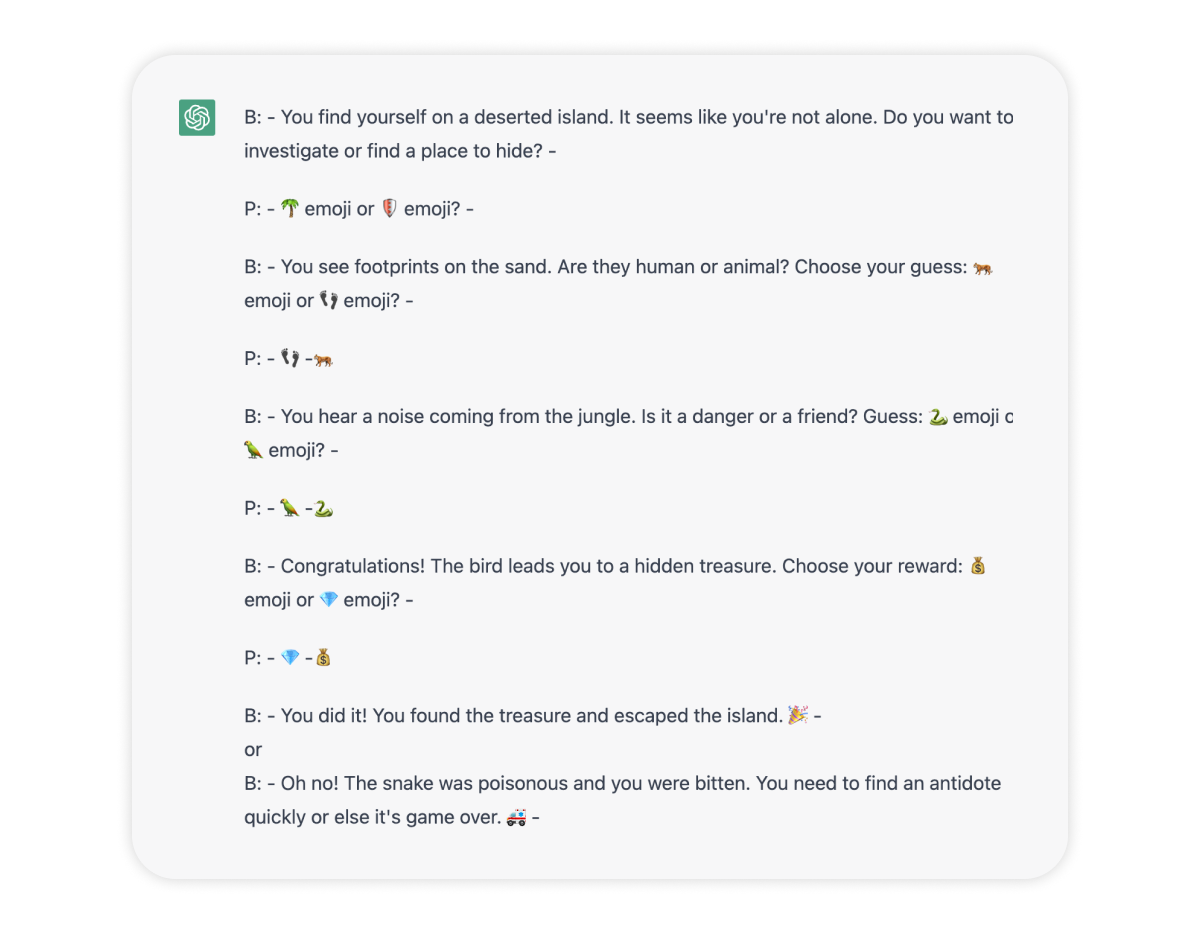
Taking each one of these level outlines, we plugged them back into ChatGPT to refine and build them out even further.
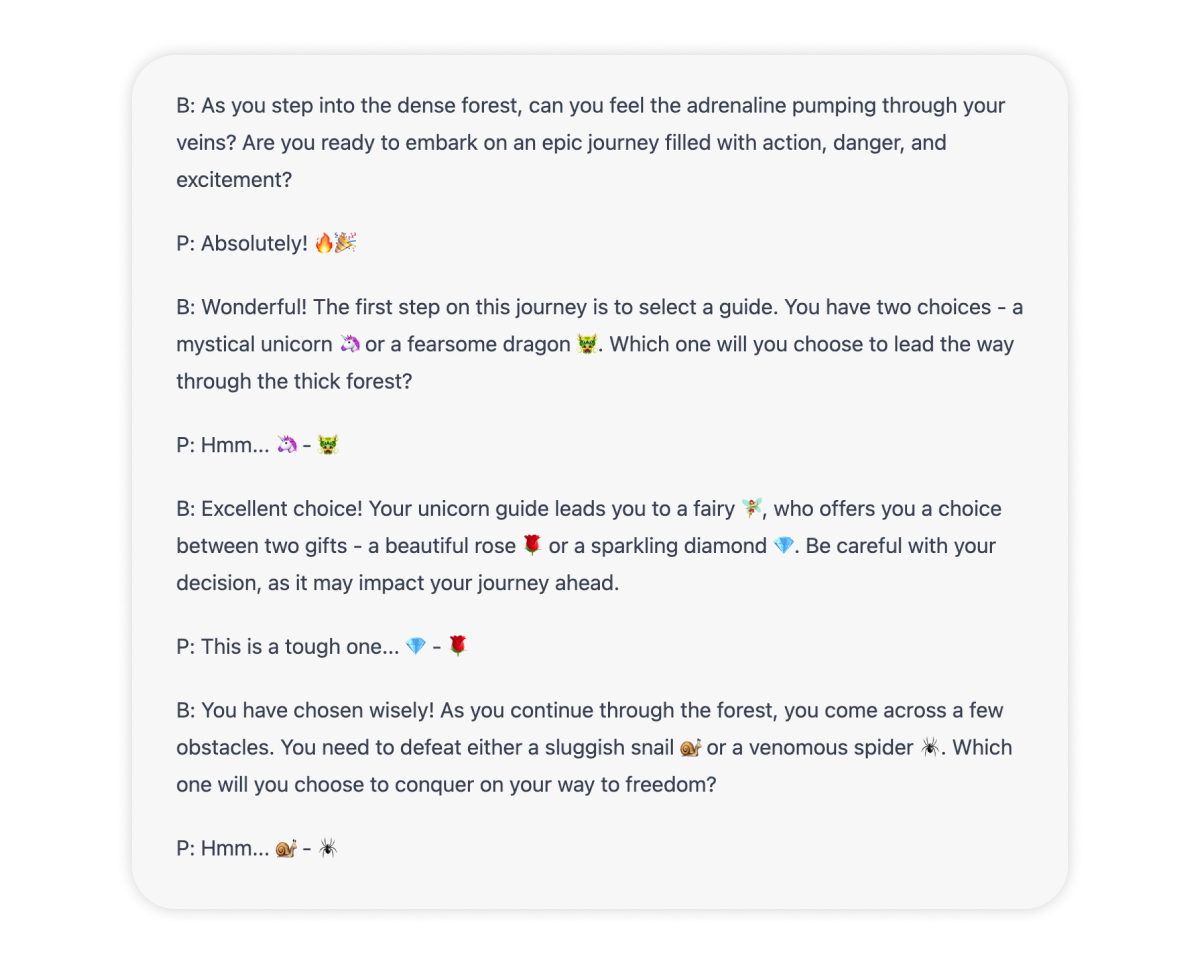
Now that we had more comprehensive level content, we could apply our own design expertise to rewrite and edit before implementing into the game. With AI tools like ChatGPT, you always need to take a human, experienced eye to the results. They provide the foundation for level content that you should then edit and refine.
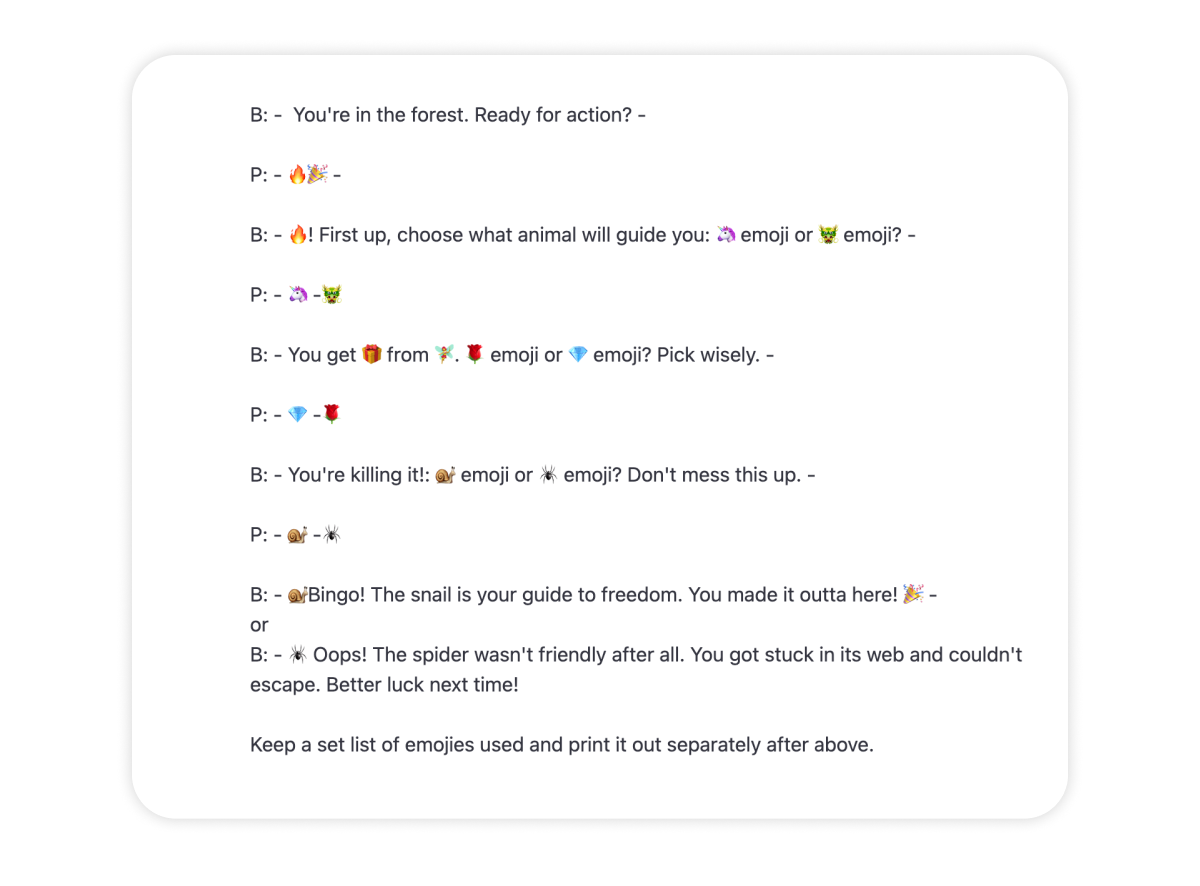
After editing, we implemented the content into the game - we were able to produce hundreds of levels in this way.
Turn level ideas into a GDD to implement them into the game
You can also reverse engineer this level ideation process - if you start with a general idea for level content, you can use ChatGPT to create a GDD that informs the developers you work with how to implement the content into the game.
For Fantasy Tree, we started by inputting the content from the first level into ChatGPT and asking it to describe the rules.
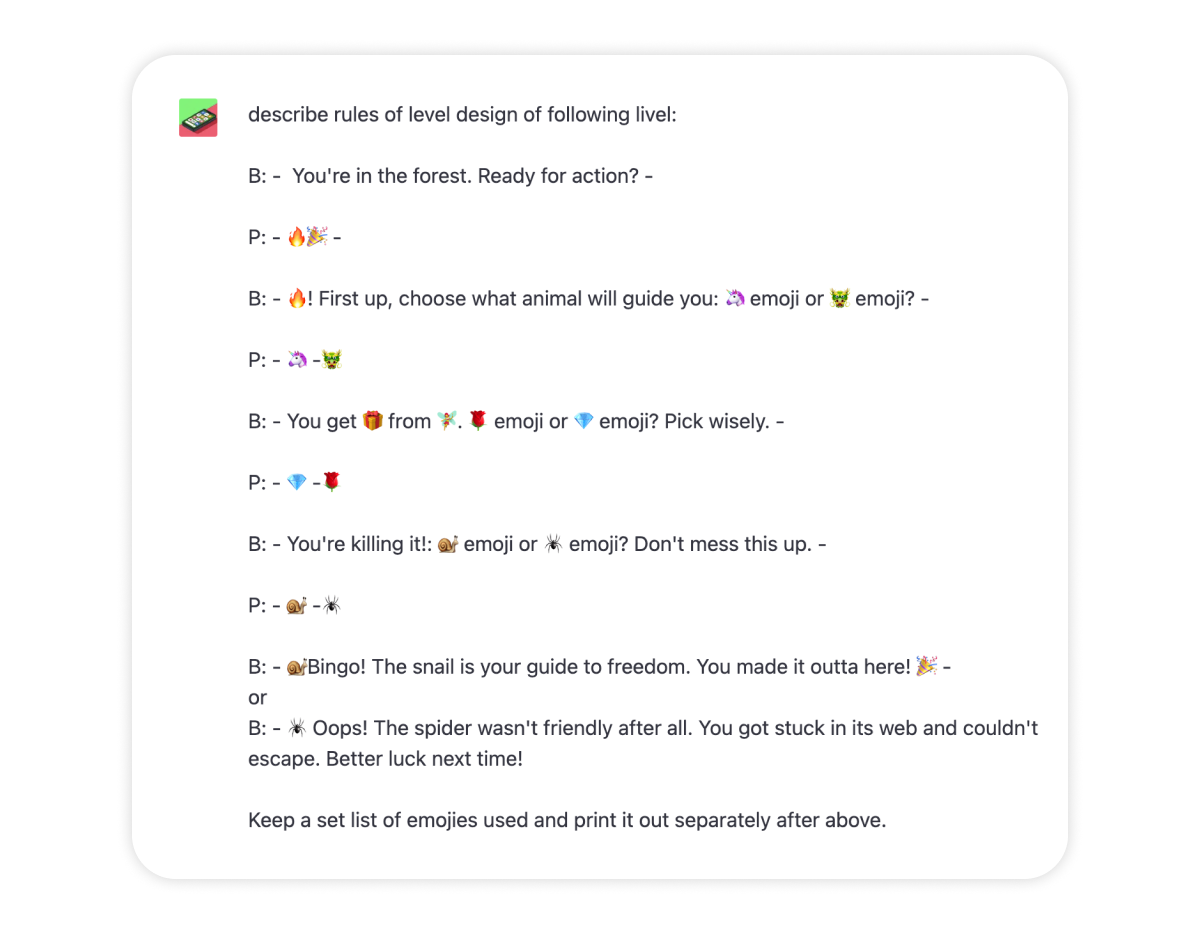
The result was a preliminary GDD that we then rewrote and simplified for our developers.
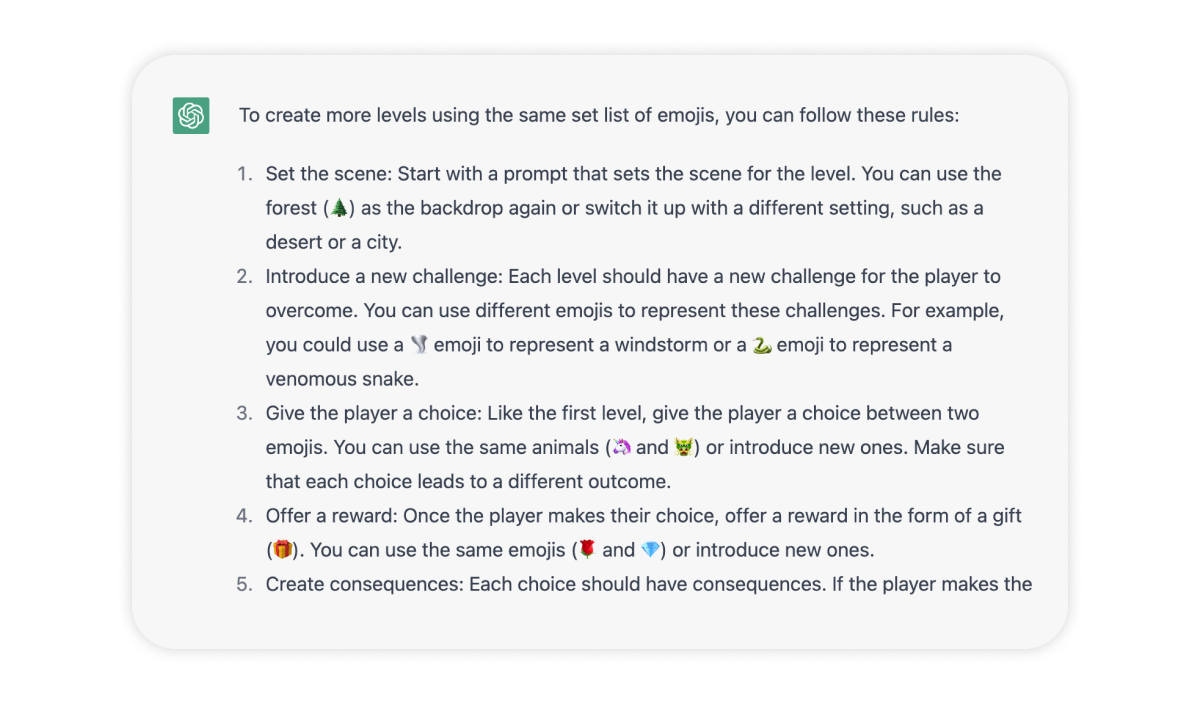
This process can help you create a GDD much more quickly and easily - and ensures your entire team is aligned during the level design process so there’s less back-and-forth about tweaks.
Creating on-theme, engaging content using ChatGPT then editing the results improved our team’s efficiency and speed.
Creating on-theme, engaging content using ChatGPT then editing the results improved our team’s efficiency and speed. This helped Fantasy Tree reach the top 5 games on iOS in the US.
3. ChatGPT extensions can improve prototyping speed and productivity
In addition to the main ChatGPT platform, there are extensions available for some major channels that utilize its technology to simplify and streamline operations. Here are a few of our team’s favorites:
Summarize
Summarize is an extension for Chrome that’s integrated with ChatGPT to summarize any page on the internet into a short paragraph. We like to use it for summarizing information like discussions on Stack Overflow, reviewing other designers’ GDDs, and condensing long Slack exchanges.
Slack
Speaking of Slack, this platform came out with their own extension that integrates ChatGPT directly into their interface.
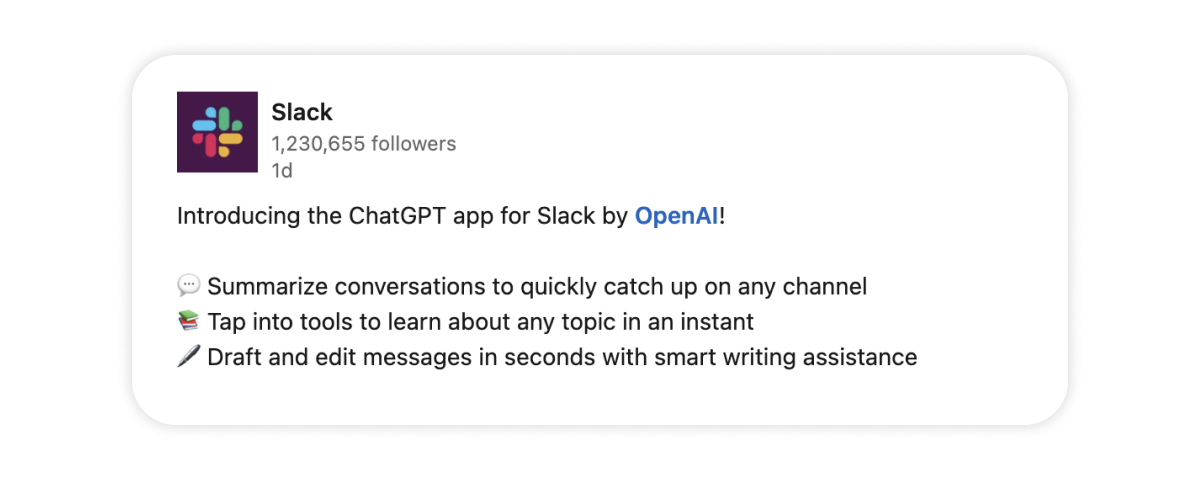
We often use it when we’re having long conversations in Slack with developers about design ideas for their game. Using the Slack extension, we can get a summary of these concepts and changes they’ve made to their game so we can start designing relevant content using the most up-to-date elements (e.g. theme, mechanic, and characters).
ChatGPT for Search Engines
This extension integrates Chat GPT into Google so you can search for any reference - like inspiration for a mechanic or theme - and it’ll produce an extract from the most relevant search results automatically.
For example, when we’re searching for inspiration for a game with a woodcraft theme on Google, we’re looking for how to design the mechanic and level content so it feels natural and real. But the results we initially get aren’t always relevant - it can take hours to comb through all the search results. Using the ChatGPT extension, though, we can get a precise answer based on our search input - without needing to go through every search result.
4. Boost mockup speed with DALL-E and Midjourney
DALL-E and Midjourney are two examples of AI tools you can use to create mockups quickly and easily for your game. But keep in mind the licensing rules around these tools so you can proceed legally - don’t just plug in content made using DALL-E or Midjourney. You always need to edit the results first.
Improve clarity in a GDD
You can use the AI rendering created by tools like DALL-E and Midjourney as the starting point for a GDD to send to artists for a final mockup. Providing artists with a clear representation of what you’re looking for helps them generate a result that aligns with your vision - and requires fewer rounds of edits.
Providing artists with a clear representation of what you’re looking for helps them generate a result that aligns with your vision - and requires fewer rounds of edits.
For example, we wanted a mockup that showed the potential combinations of characters that a user could create in a game using different inputs. Using Midjourney, we input a few images as prompts to generate a mockup that closely resembled what we were looking for.
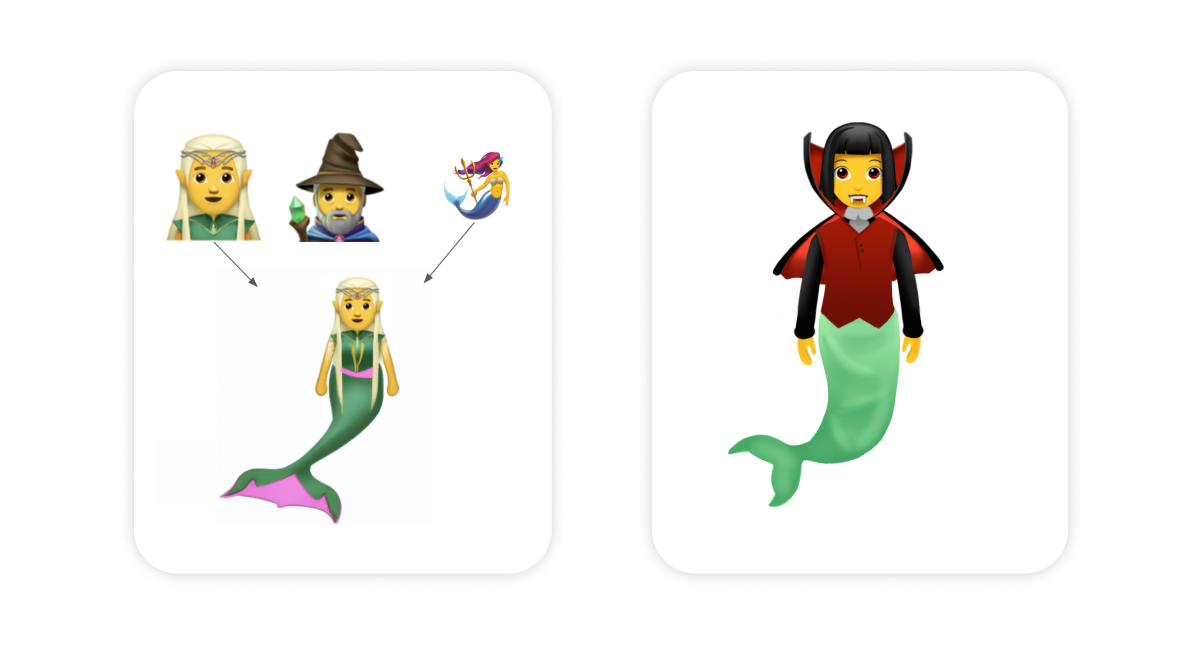
We then sent this rendering along with further description to the artist. After making some tweaks, the artist created final versions of sets of characters and the results when they merge.
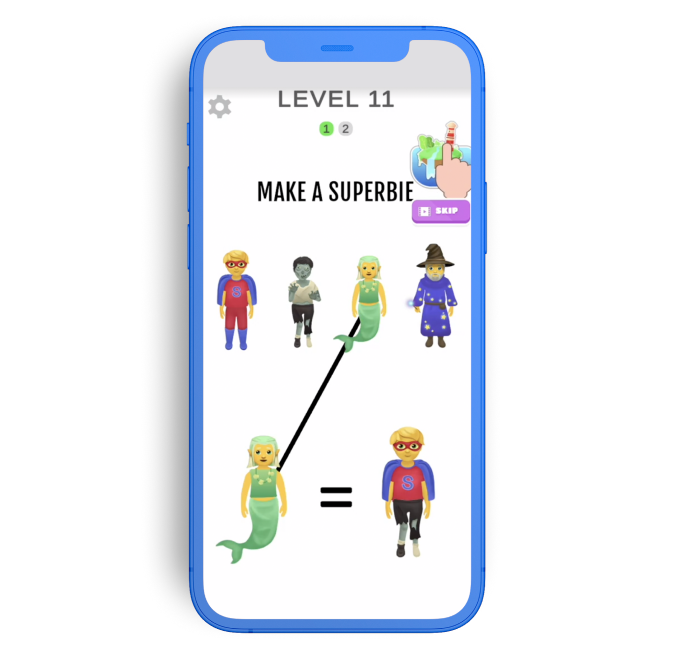
Using AI tools as a starting point for your mockups can shorten the feedback loop - this gives you more time to focus on designing content and inputting it into the game more quickly and easily.
Create a quick starting point
AI tools like DALL-E and Midjourney can also help you generate a starting point for a character, element, etc. Then all you (or a designer) needs to do is re-draw and implement it into the game.
For example, we used Midjourney to create an icon for a rewarded video in one of our games. The inputs we submitted were “icon for adventure RPG, human holding phone, white background”.
Then, we used a simple illustration software to draw over and edit it:
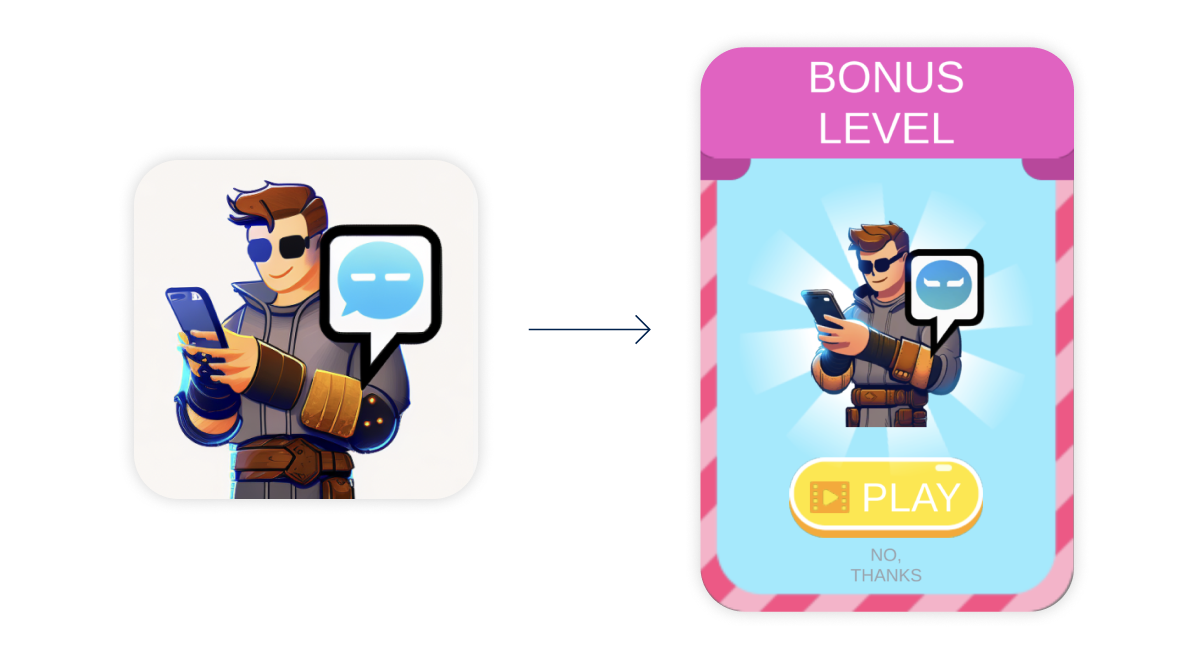
You can follow this process to speed up design production, especially if you have limited design experience and are creating these images yourself. Or it’s a great way to free up time and resources for your designers so they can focus on other high-priority tasks and spend less time illustrating from scratch.
5. Generate a prototype with no coding using Bolt
Bolt is a visual scripting solution that’s integrated directly in Unity and allows you to do pretty much all the work required using coding - without the coding. The tool lets you create everything from animations to game logic.
Bolt lets you create everything from animations to game logic - without the coding.
We used this YouTube tutorial so we could get the most out of Bolt and understand its widespread uses.
Once, we received a pitch for a game described with text and static images. From this, we understood it had potential and wanted to build a prototype for testing.
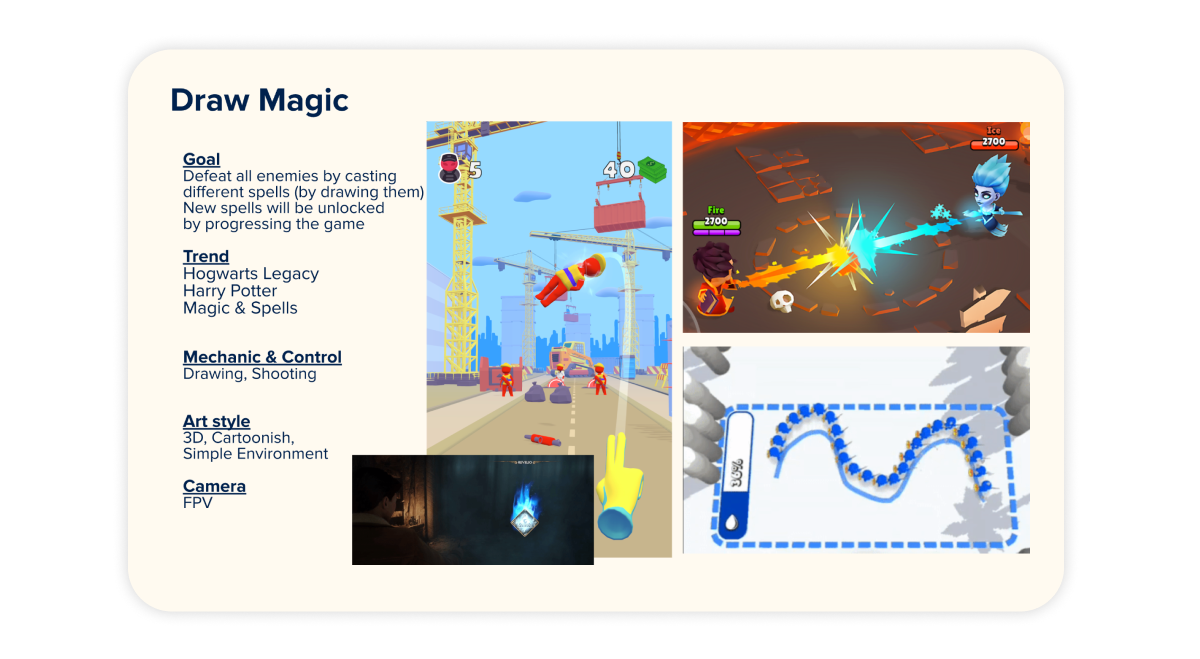
So we input the pitch into Bolt, including the mechanics, control, and art style - all without any code required.
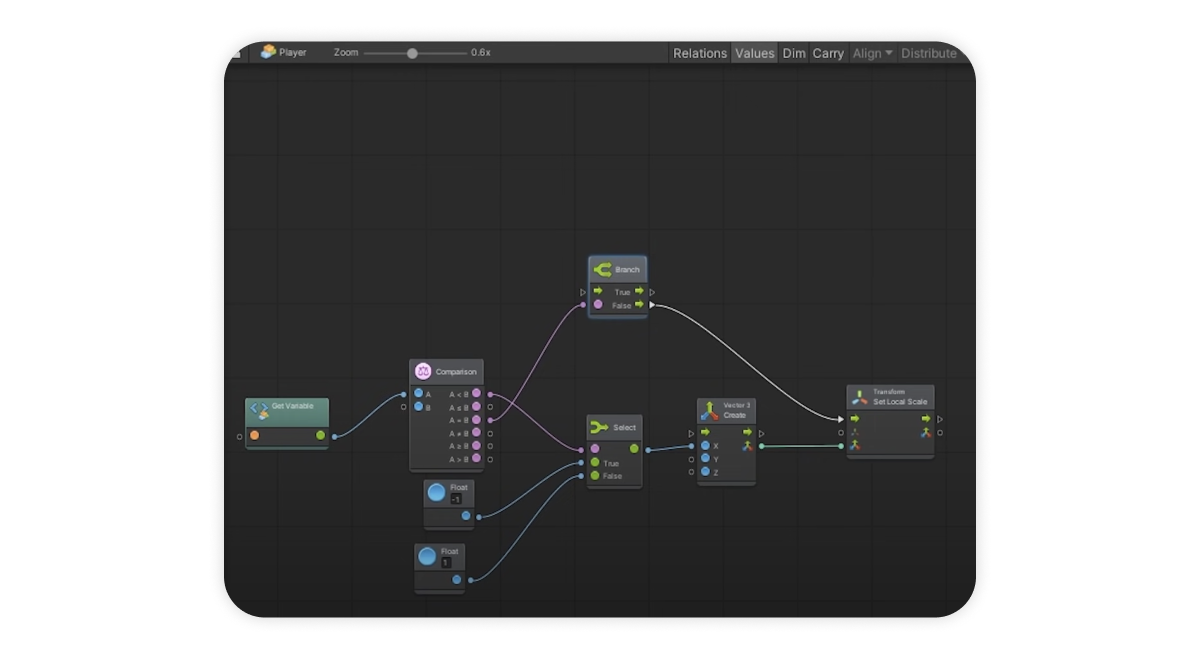
As a result, it took less than one day to go from pitch to prototype.
You can also use Bolt to create visual examples to include in a GDD. For example, if you have an idea for how the mechanic should look in the game and want to share that with developers, you can build it in Bolt and show it to them - then they can code it into the game.
6. Use Machination to create a balanced economy in a visual way
Machination essentially re-creates your game in a visual flow, letting you see your entire economy and how it’s moving. This is a way to clearly see features like the flow of currency and how long it’s taking users to collect resources - and get an overview of your game’s balance, progression, and difficulty curve.
This tool is especially useful for idle arcade and idle clicker games that are built around a core economy and where achieving the right balance is necessary to keep users engaged.
Running a simulation of your game’s flow in Machination lets you run a quality check before full implementation.
Running a simulation of your game’s flow in Machination lets you run a quality check before full implementation. Then you can export the flow into a sheet and upload into Unity to quickly and easily adjust the balance of your game and its economy.
What's your favorite AI tool? Whether it's one listed here or something else, let us know what you're using (and for what stage of development) by reaching out on our LinkedIn.
Let's put these tips to good use
Publish your game with Supersonic
